Caviar Sends Poachers After Columbia River Sturgeon
Air Date: Week of July 17, 2015
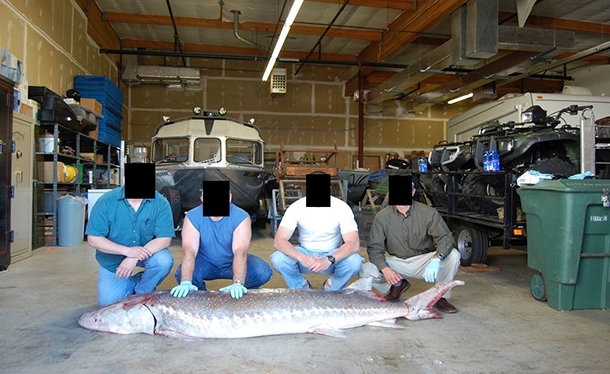
Officers with Operation Broodstock pose with an illegal sturgeon. (Photo: Courtesy of Washington Department of Fish and Wildlife)
Caviar, prized as a luxury food, can sell for as much as $200 an ounce. As EarthFix’s Cassandra Profita reports, most caviar comes from the Caspian Sea, but the decline of sturgeon there is driving fishermen and poachers to populations in the Pacific Northwest’s Columbia River. Despite active policing of the river and catch limits on sturgeon, poachers and traffickers still manage to pull black gold from the riverbed, threatening the fish’s survival.
Transcript
CURWOOD: It’s Living on Earth; I’m Steve Curwood. Wildlife cops in the Pacific Northwest have uncovered a problem on the Columbia River. Poachers are catching and killing giant sturgeon. The crime is driven, in part, by global demand for black market caviar, and it’s putting the whole sturgeon population at risk. As part of our EarthFix series on wildlife crime, Cassandra Profita went on patrol and brings us this report.
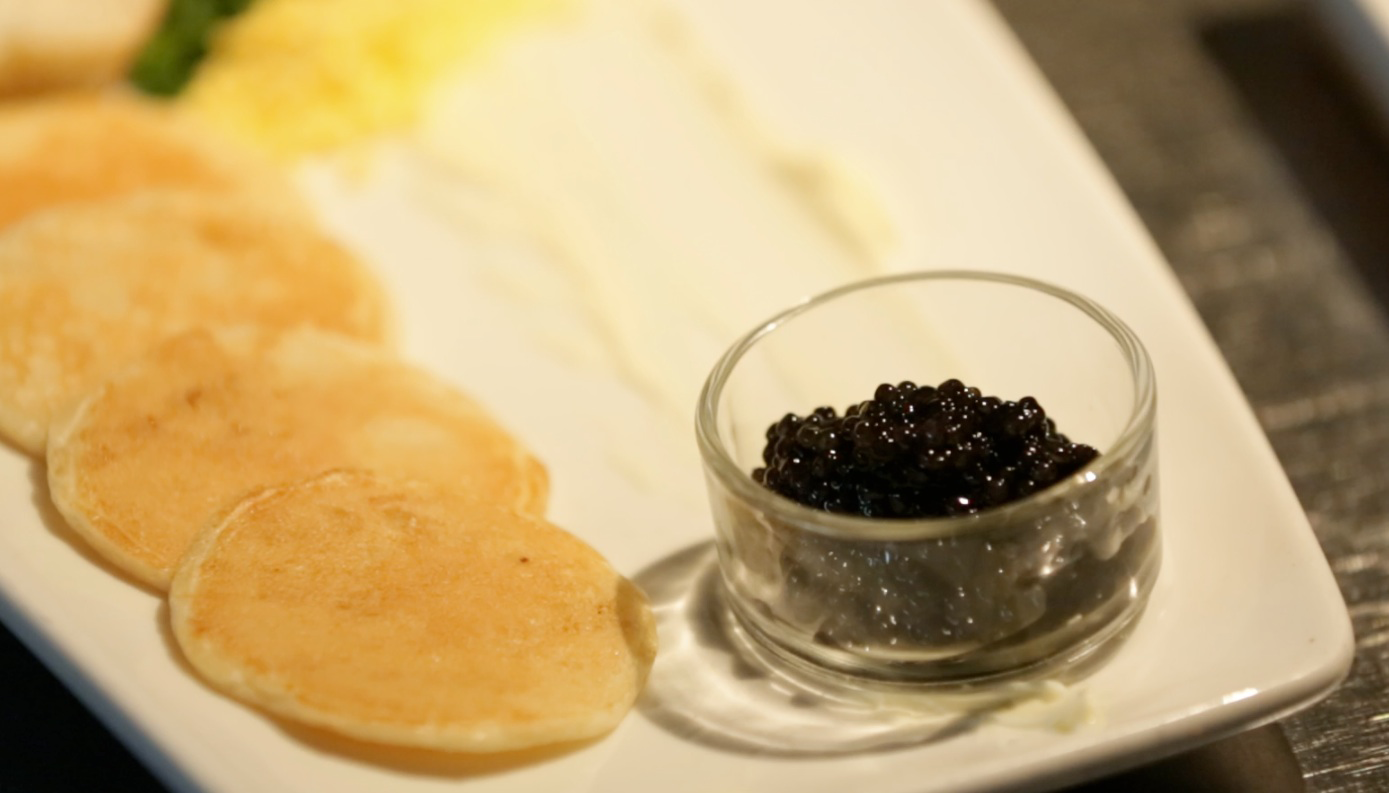
Sturgeon caviar can sell for as much as $200 an ounce. (Photo: Collin Golden)
PROFITA: It’s a high-speed pursuit in an unlikely place: the Columbia River. Wildlife cops are chasing a boat with illegal sturgeon on board.
OFFICER: Stop right now!
PROFITA: The suspected poachers are making a run for it. As the police boat catches up, the suspects look over at the cops. But instead of stopping their boat, they speed up.
OFFICER: Hey guys, stop! No, you’re gonna stop right now! You’re gonna stop right now!
PROFITA: Officers say some poachers are targeting not just any sturgeon but the biggest ones that produce the eggs for future generations. Sturgeon can live 100 years and grow to more than 20 feet long.
JONES: First of all, they're the coolest looking fish that swims in the river.
PROFITA: Tucker Jones is a biologist with the Oregon Department of Fish and Wildlife.

Mitch Hicks patrols the Columbia River above Bonneville Dam. (Photo: Collin Golden)
JONES: They look prehistoric. They don't have any bones. They're cartilaginous similar to a shark.
PROFITA: Jones says it takes more than 20 years for female sturgeon to start producing eggs. By then, they're more than five feet long.
JONES: Once they reach maturity, they're really important. You have a fish that's capable of sustaining a population for a long time and the older they get, the more eggs they produce.
PROFITA: Fishing rules restrict people from catching those oversize fish. Their eggs are crucial to the sturgeon population, but they're also a delicacy, prized as some of the world's finest caviar. Mike Cenci is the assistant chief of enforcement for the Washington Department of Fish and Wildlife. He says that's what driving sturgeon poachers to the Columbia River.

The man in this photo has been charged with trying to sell an illegal sturgeon. Police say he used this cellphone photo of himself alongside the fish on the bank of the Columbia River to market the fish. (Photo: Courtesy of Washington Department of Fish and Wildlife)
CENCI: The hottest commodity from an oversized fish is not the flesh, although that has a market value for sure. It's the caviar.
PROFITA: The biggest sturgeon can carry up to a hundred pounds of eggs. And after they’re processed into caviar, those eggs can be sold in stores and restaurants for up to $200 dollars an ounce. That means the eggs from one sturgeon could ultimately be worth hundreds of thousands of dollars.
CENCI: We know as long as that resource is around, it’s going to attract poachers and traffickers because the value is high.
PROFITA: Mitch Hicks is the chief of enforcement for the Columbia River tribes. He's in his patrol boat alongside a rocky bluff on the river.
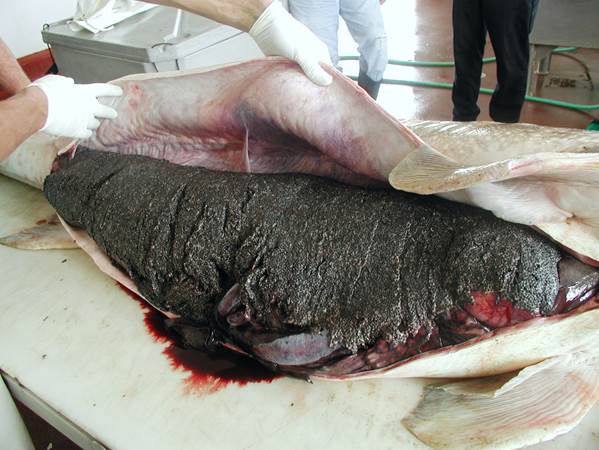
A sturgeon full of roe seized from an illegal net on the Columbia. (Photo: Courtesy Oregon State Police)
HICKS: This area right here is where we have found oversized or broodstock-sized sturgeon before. They've been tied with ropes and attached to the shoreline here.
PROFITA: Wildlife cops say this is how poachers sneak giant sturgeon out of the Columbia. They keep the fish alive and hidden underwater by tying it to remote stretches of the riverbank. That way it will stay fresh while they look for a black market buyer. Then they wait until nightfall to come back and retrieve the fish.
HICKS: So if we were doing a routine patrol, we would be running our boat fairly close to the shore, looking for lines, cables.
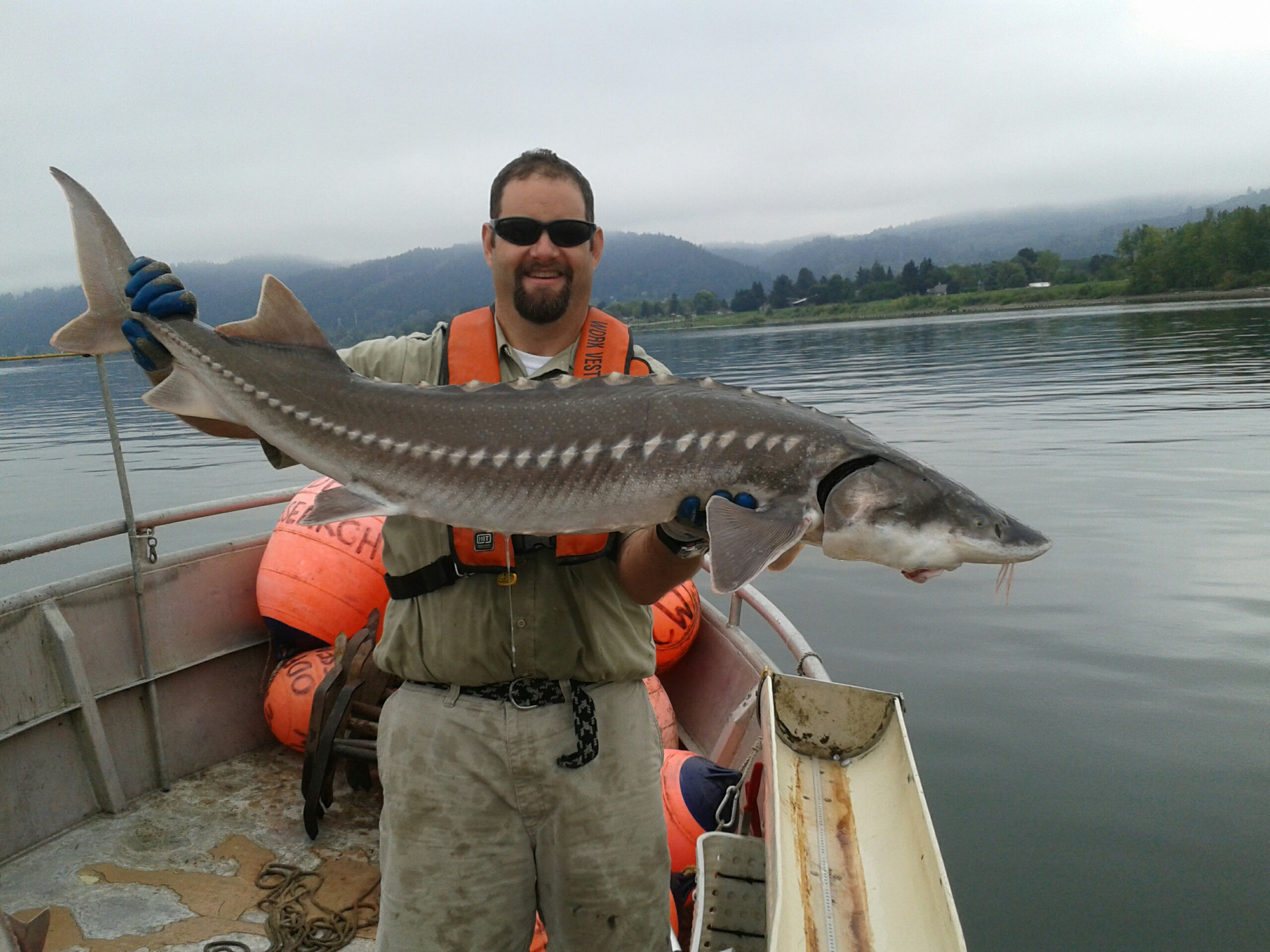
Tucker Jones counts sturgeon on the Columbia River. (Photo: ODFW)
PROFITA: Sometimes, he says, he'll pull on one of those lines and find a sturgeon tied to the shore.
At the Russian restaurant Kachka in Portland, customers pay $84 for just half an ounce of the best sturgeon caviar on the menu. It comes from farms to protect wild stocks. But it’s so expensive that owner Bonnie Morales uses a scale in the middle of the restaurant to serve it. That way, customers can watch as she measures out a small spoonful of these tiny black eggs.
MORALES: We want to be really transparent with making sure people know they're getting exactly what they're paying for.
PROFITA: Morales says she can see why people would be poaching the white sturgeon found in the Columbia River – especially after the collapse of sturgeon in the Caspian Sea.
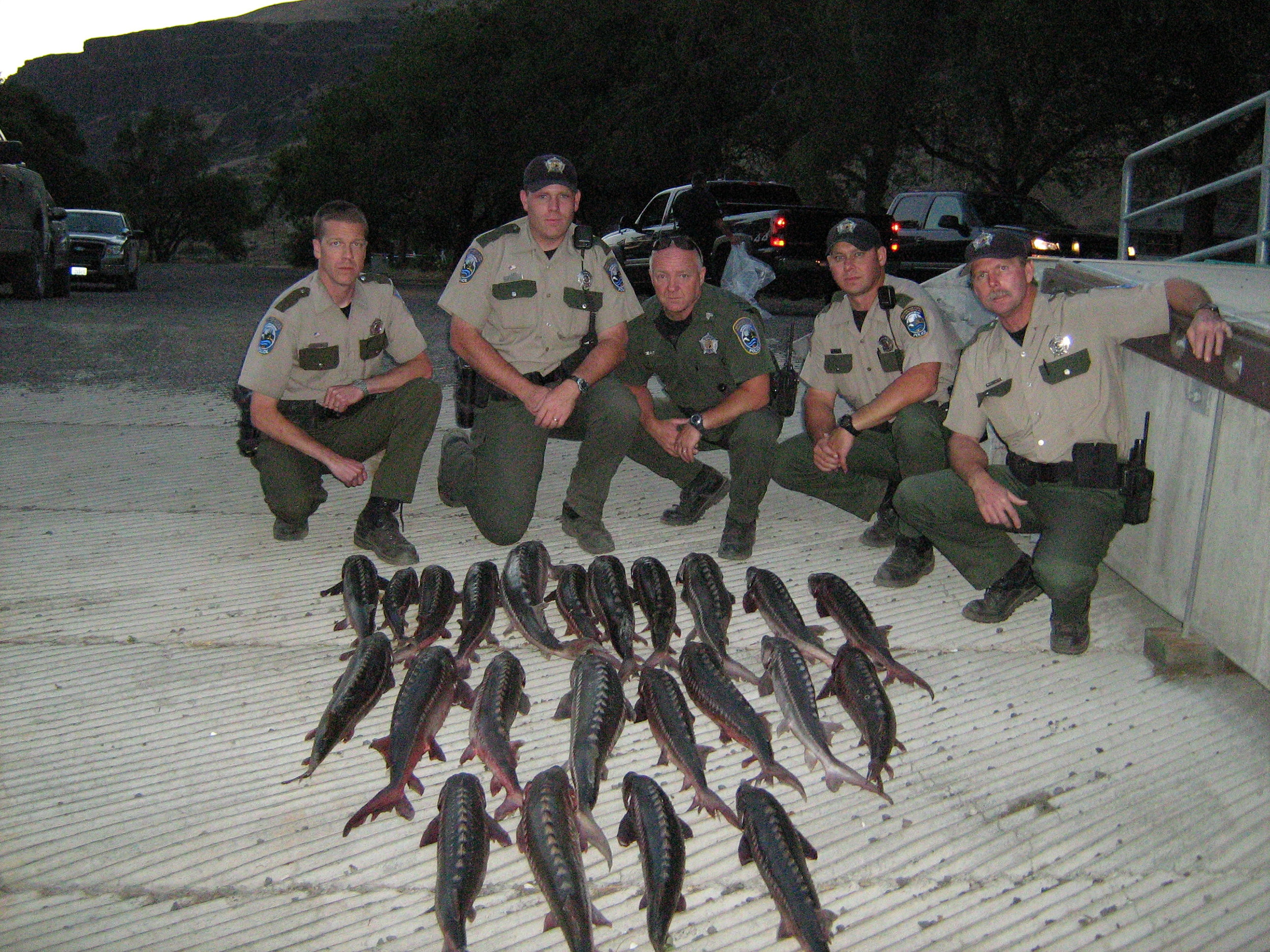
In an undercover sting, wildlife cops found it was easy to purchase illegal sturgeon from the Columbia River. (Photo: Courtesy of Washington Department of Fish and Wildlife)
MORALES: White sturgeon is becoming more and more of a premium item, and so there's a lot of respect for it now. And they're very easy to catch. They're like big submarines.
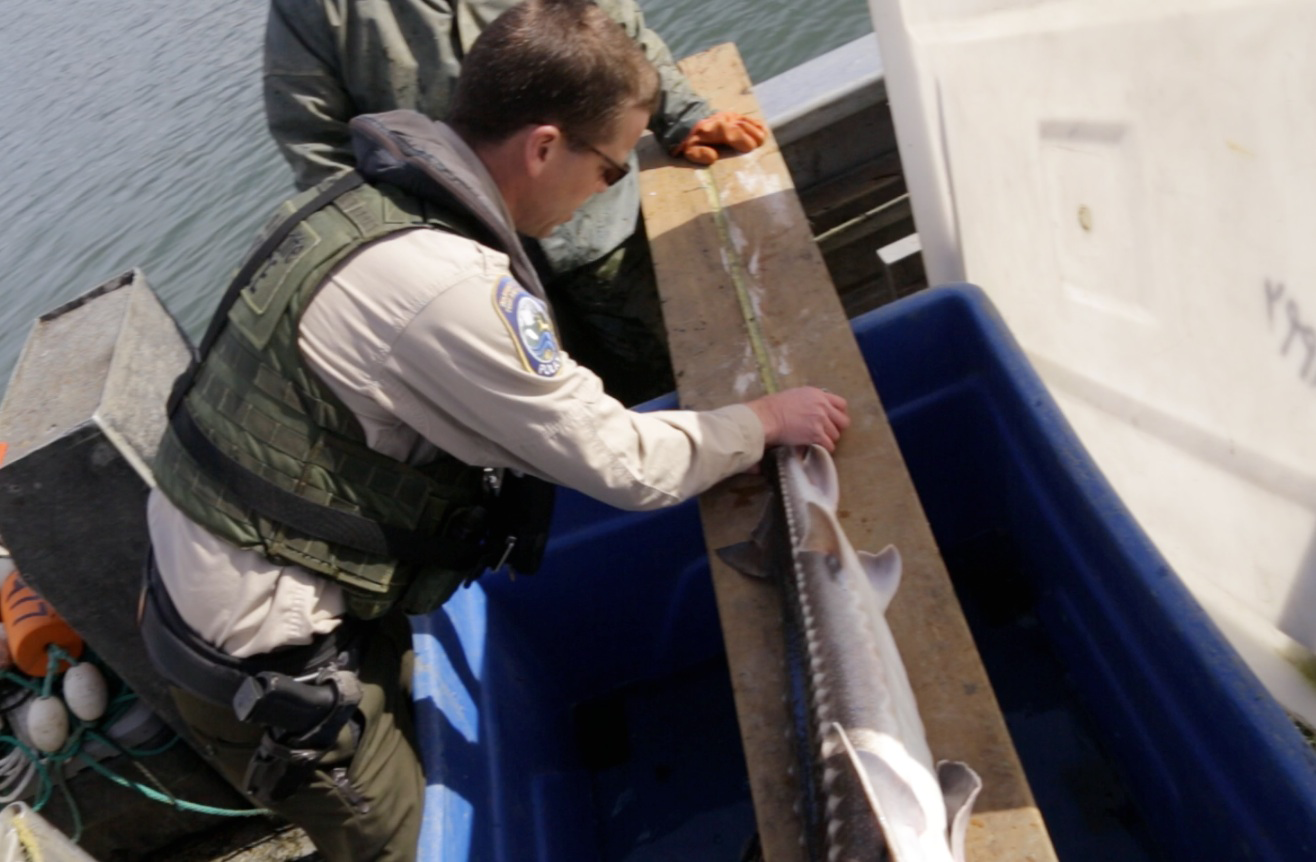
Dan Bolton measures a sturgeon on a fishing boat to make sure it’s legal size. (Photo: Jordan Bentz)
PROFITA: On some parts of the Columbia, managers have canceled fishing seasons because sturgeon numbers are so low. It's unclear if sturgeon poaching is to blame. Sturgeon have been hampered by dams, and now they're on the menu for the Columbia’s growing number of sea lions. Officials say that makes it even more important to protect the fish from poachers.
I'm Cassandra Profita reporting.
CURWOOD: Cassandra reports for the public media collaborative EarthFix. There’s video footage of that police chase at our website LOE.org, and check out the animation that explains how sturgeon poachers operate.
Links
More about Sturgeon Poaching on OPB/EarthFix’s Wildlife Detectives: A Special Report
Sturgeon fishing seasons have been canceled due to low numbers
White Sturgeon populations in the Columbia are extremely low.
Steller Sea Lions Are Putting The Bite On Columbia Sturgeon
Sturgeon poaching and black market caviar: a case study
8 Held in Probe of Alleged Sturgeon Poaching
Roe to Ruin: The Decline of Sturgeon in the Caspian Sea and the Road to Recovery
Living on Earth wants to hear from you!
Living on Earth
62 Calef Highway, Suite 212
Lee, NH 03861
Telephone: 617-287-4121
E-mail: comments@loe.org
Newsletter [Click here]
Donate to Living on Earth!
Living on Earth is an independent media program and relies entirely on contributions from listeners and institutions supporting public service. Please donate now to preserve an independent environmental voice.
NewsletterLiving on Earth offers a weekly delivery of the show's rundown to your mailbox. Sign up for our newsletter today!
 Sailors For The Sea: Be the change you want to sea.
Sailors For The Sea: Be the change you want to sea.
 The Grantham Foundation for the Protection of the Environment: Committed to protecting and improving the health of the global environment.
The Grantham Foundation for the Protection of the Environment: Committed to protecting and improving the health of the global environment.
 Contribute to Living on Earth and receive, as our gift to you, an archival print of one of Mark Seth Lender's extraordinary wildlife photographs. Follow the link to see Mark's current collection of photographs.
Contribute to Living on Earth and receive, as our gift to you, an archival print of one of Mark Seth Lender's extraordinary wildlife photographs. Follow the link to see Mark's current collection of photographs.
 Buy a signed copy of Mark Seth Lender's book Smeagull the Seagull & support Living on Earth
Buy a signed copy of Mark Seth Lender's book Smeagull the Seagull & support Living on Earth

